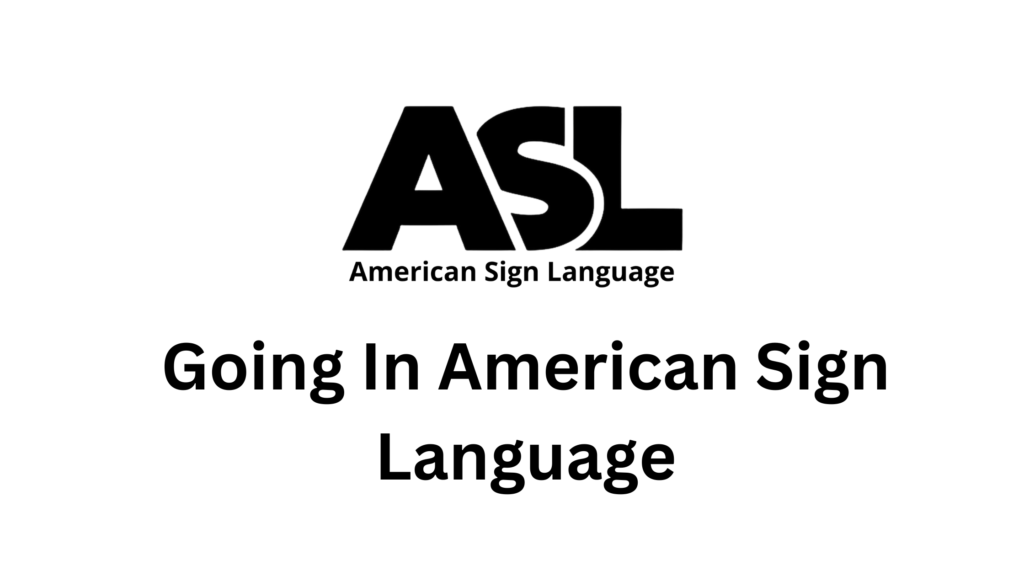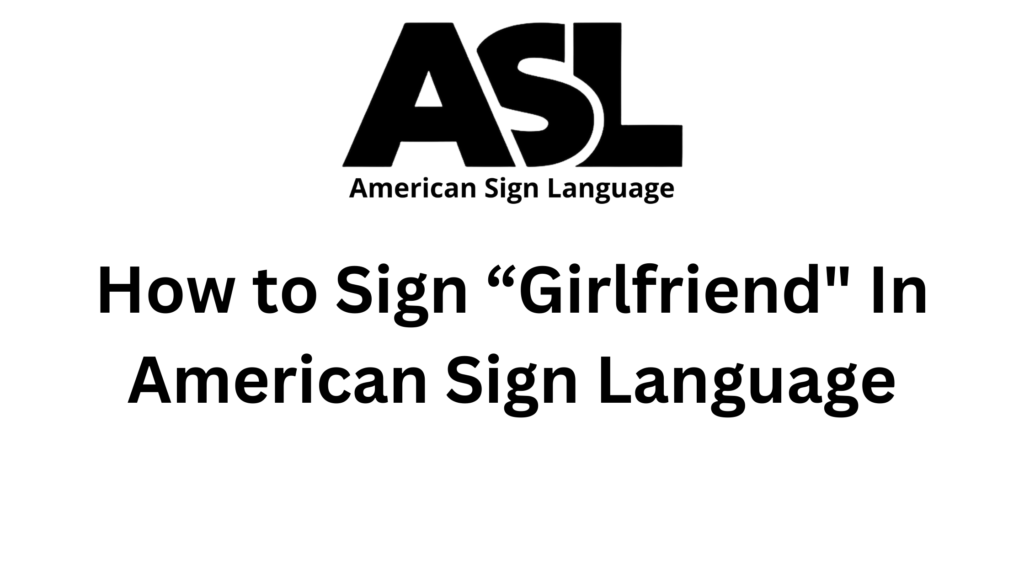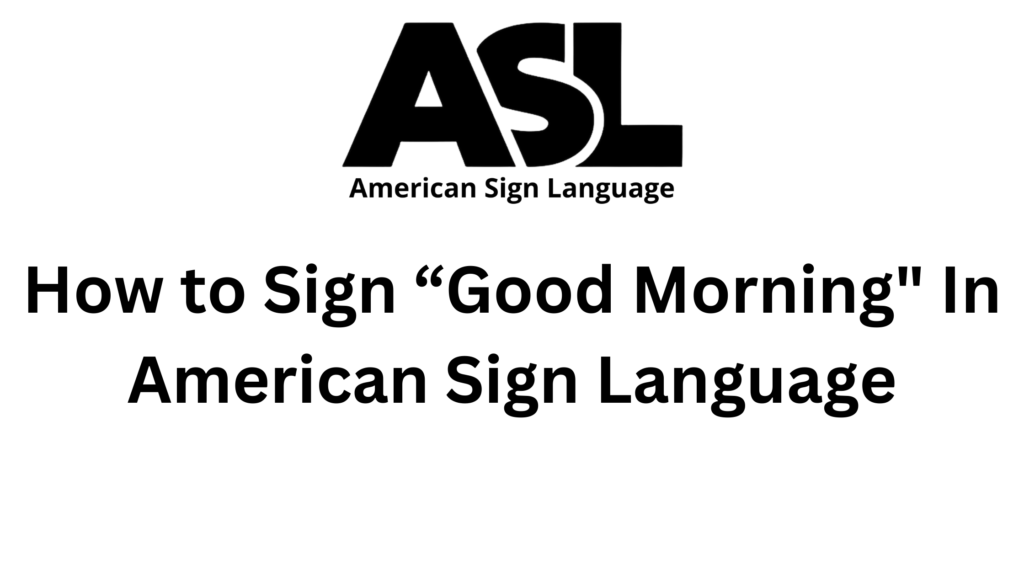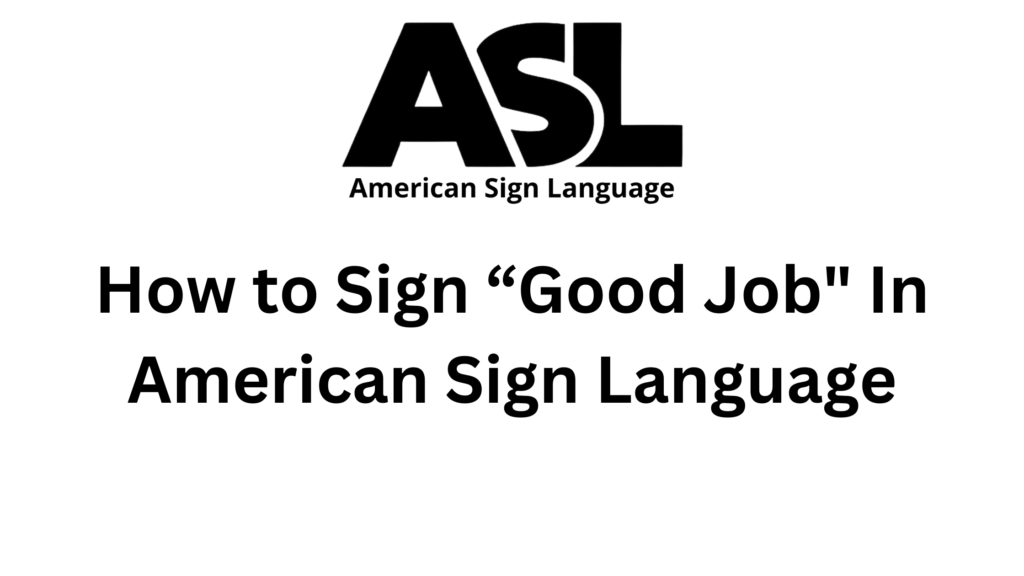Introduction to “Go” in ASL
American Sign Language (ASL) is a rich and expressive language used by the Deaf community in the United States and parts of Canada. Learning ASL helps bridge communication gaps and fosters deeper connections. One fundamental sign to learn is “go.” This sign is essential for everyday conversations, as it helps you discuss movement and actions. Whether you are a beginner or advancing in your ASL skills, mastering the sign for “go” is crucial.
Basic Handshape and Orientation of “Go”
To sign “go” in ASL, you need to start with the correct handshape and orientation. Here’s how you begin:
- Handshape: Use your index fingers from both hands. Point them upward, with your other fingers curled into your palms.
- Orientation: Position your hands so that your index fingers are pointing outward, away from your body.
These basic elements are the foundation of the sign for “go.” Correct handshape and orientation are essential for clear communication.
Step-by-Step Signing Instructions for “Go”
Now that you know the basic handshape and orientation, let’s go through the step-by-step instructions for signing “go.”
- Position Your Hands: Raise both hands to chest level, with your index fingers extended and pointing upward.
- Movement: Move your hands forward in a straight line. The motion should be smooth and direct, indicating the action of going.
- Ending Position: Your hands should end in front of you, with your index fingers still pointing outward.
By following these steps, you will be able to sign “go” accurately and effectively.
Facial Expressions and Non-Manual Markers for “Go”
In ASL, facial expressions and non-manual markers (NMMs) are crucial for conveying meaning and context. When signing “go,” your facial expression should match the intent and urgency of the action.
- Neutral Expression: Use a neutral facial expression for general statements or commands involving “go.”
- Urgent Expression: Show urgency on your face if you are telling someone to go quickly or immediately.
- Questioning Expression: Raise your eyebrows if you are asking a question about going somewhere.
These facial expressions help convey the appropriate tone and context of your message, making your signing clearer and more effective.
Common Variations and Regional Differences for “Go” Sign Language
ASL, like any language, can have regional variations. The sign for “go” might differ slightly depending on where you are or who you are talking to.
- Standard Sign: The steps described above are widely accepted.
- Regional Variations: In some regions, people might use different handshapes or movements. For example, some might use a single hand instead of both hands.
Being aware of these variations can help you better understand and communicate with people from different regions.
Practicing and Politeness for “Go” Sign Language
Practice is key to becoming fluent in ASL. Here are some tips for practicing the sign for “go”:
- Practice Daily: Make it a habit to practice signing “go” every day.
- Use a Mirror: Sign in front of a mirror to check your handshape, orientation, and facial expressions.
- Sign with Friends: Practice with friends or family members who know ASL.
Being polite in ASL also involves using the correct signs and showing respect for the culture. Always be mindful of your facial expressions and body language.
Using “Go” in Everyday Situations
Knowing how to sign “go” is useful in many everyday situations. Here are a few examples:
- Giving Directions: “Go straight and then turn left.”
- Planning Activities: “Let’s go to the park.”
- Encouraging Someone: “You can go now.”
Using the sign for “go” in different contexts helps you become more comfortable and fluent in ASL.
Additional Signs for “Go”
To expand your ASL vocabulary, here are some additional signs related to “go”:
- Stop: Use a flat hand to indicate stopping motion.
- Come: Use a beckoning motion with your hand.
- Run: Use a running motion with your hands, similar to the sign for “go” but with more intensity.
Learning these additional signs will give you a broader understanding of ASL and make your communication more versatile and expressive.
Cultural Considerations of “Go” in ASL
Understanding the culture behind ASL is important. The Deaf community values clear and expressive communication. Here are some cultural tips:
- Respect the Language: Always strive to use ASL correctly and respectfully.
- Engage with the Community: Participate in Deaf events and practice signing “go” and other words with native users.
- Be Patient: Learning a new language takes time. Be patient with yourself and others.
By considering these cultural aspects, you will become a more respectful and effective communicator in ASL.
Conclusion of “Go”
Signing “go” in ASL is a valuable skill that enhances your ability to communicate with the Deaf community. By understanding the basic handshape, orientation, and facial expressions, you can accurately sign “go.” Remember to practice regularly and be mindful of cultural considerations. With dedication and practice, you will become more proficient in ASL.
For more information on learning ASL and other signs, visit our homepage.








